The houses Brad Kittel builds may be tiny, but they're the product of big vision, pure salvage, and a fair amount of space magic.
Made In Texas: Tiny Texas Houses
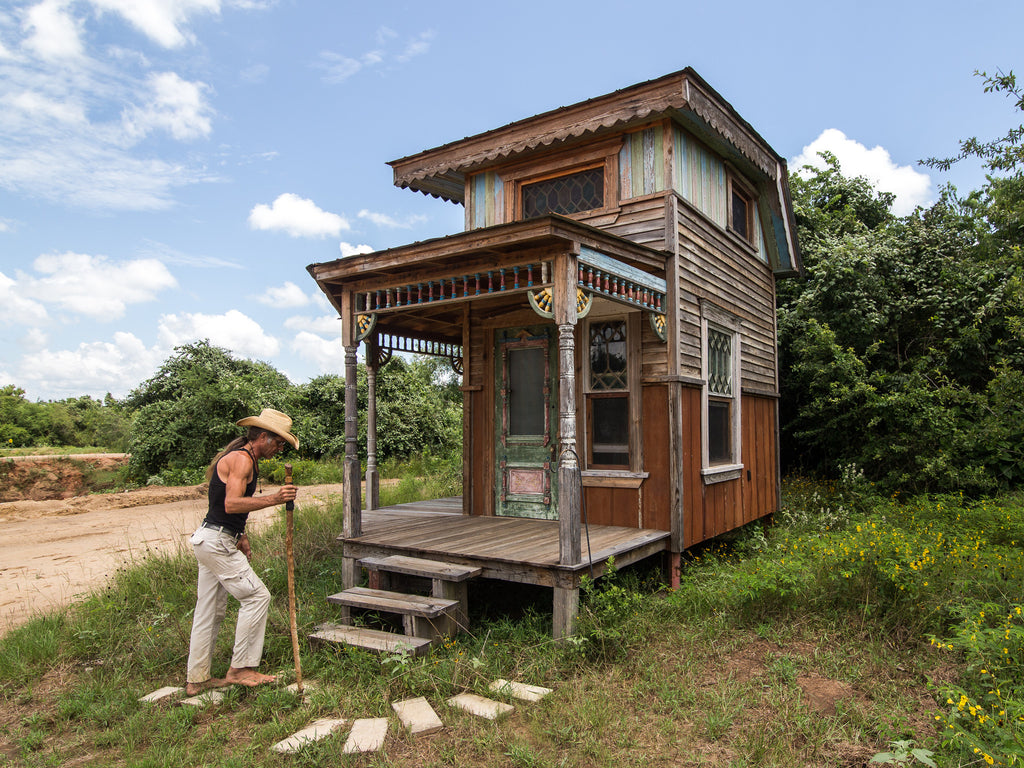

In this recurring series, we visit the best product brands in the Lone Star State, and introduce you to the Texans behind them. Our Made in Texas series is an extension of our popular 2013 publication, Texas Works: Products and Portraits of Talent. Introduction by Vincent Friedewald; photos and tour narrative are by Caleb Kerr.
We've been wanting to visit Tiny Texas Houses in Luling, Texas for some time now. In 2013, we tried to include them in our aggressive production schedule of Texas Works, but ultimately that schedule proved too aggressive, indeed.
Two summers later, we made it there. Still muddied by the June rains that flooded most of Texas, the property sits just off of Interstate 10 less than an hour east of San Antonio. If you've driven past, you've likely seen the large metal roof with Texas-sized letters, announcing the big things being made there: TINY TEXAS HOUSES.
Even if you've never driven through Luling, you've probably encountered a Tiny Texas House somewhere else. The tiny house movement can fairly still be called a recent one, but it can no longer be called new. By now, we've all seen the tv shows and coffee table books and Sunday edition newspaper articles. We've admired the photos of these cute little architectural marvels on Pinterest.
And chances are, among all of the tiny house media you've admired, you've almost certainly seen a house designed and built by Brad Kittel and his Tiny Texas Houses. As you'll see in this photo tour by our own Caleb Kerr, there's good reason for the attention: it's not just that the Tiny Texas Houses are charming; it's that they're extraordinary, as well. Tiny Texas Houses are distinguished by the special materials used in their construction, and the ingenuity in their achievement of space where little space is otherwise available. There's a term for this achievement, you'll discover below, and the result is, in a word, magical.
Enjoy this Made in Texas photo tour: A visit to Tiny Texas Houses, in Luling.
The Tour
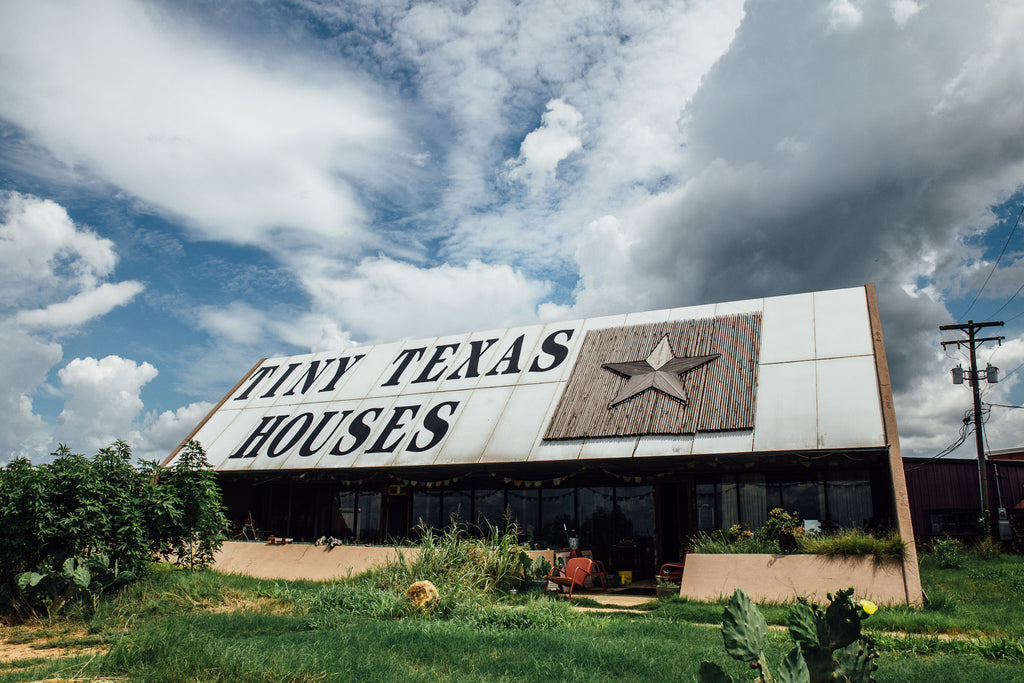
The story of Tiny Texas Houses cannot properly begin without first introducing its founder, Brad Kittel.

Tall, lean, and muscular, Brad is soft-spoken with a big earnest smile. Years ago, while enjoying a successful career in real estate, Brad met another tiny-house builder, and reached a conclusion: he could build tiny houses more economically, and more environmentally friendly than other pioneers in the movement were doing at the time.
His vision was to make what was old new again, collecting materials that had already been created but discarded, and reusing them to build unique homes with distinct personality.
And that's what he's achieved. Each house Brad designs is different, utilizing special materials in creatively functional ways. He generally does not choose a theme for a house, and prefers a product that's more eclectic than thematic.
If there's a word that's most enigmatic of the Tiny Texas Houses brand, it's salvage. We see the phrase "reclaimed wood" a lot nowadays. But Brad doesn't refer to his wood or other building materials that way. Instead, he prefers to call them salvaged. The word itself means "to rescue", and that's what you discover when you inspect a Tiny Texas House: wonderful, old, and very functional materials are finding their salvation.

The wood Brad uses is predominately old-growth long leaf pine and loblolly pine, which there is very little of left standing, and which is a better building material for his purposes than any freshly cut lumber due to its superior strength.

Brad's expertise is evident when you hear him explain the special characteristics of old-growth wood. Essentially it comes down to the spacing of the growth rings. In elementary school, we all learned that counting the rings on a tree stump will tell you its age. But for the strength of the lumber, what's important is how close together those rings are. The dark part of the ring is what gives it strength, so the more tightly spaced they are, the stronger the wood will be. New pine you might buy from a home improvement store will have very widely spaced rings by comparison, and will be relatively weak.

Brad proved these principles to me by standing and bouncing on a small piece of wood, and then remarked that he's done the same test on wood half as wide as this piece, and it's held his weight.

Brad's method of salvage is simple. He scouts real estate deals in which someone buys a plot of land with a teardown house on it with intentions of building a new one. He then offers to come take the old house down and haul it away, free of charge. They accept, and get their lot cleared free of charge, and Brad gets his building materials. As the saying goes, "one man's trash is another man's treasure."

To say that Brad has amassed a lot of building materials over the years is a monumental understatement. The facility in Luling is 20,000 square feet, comprised of material warehouses as well as wood shops and fabrication areas. But there's yet an additional warehouse in Gonzalez, TX about 20 minutes away, with an additional 80,000 square feet of space stacked to the brim with more planks, windows, doors, glass, sinks, bathtubs, and other tiny-house-building necessities.
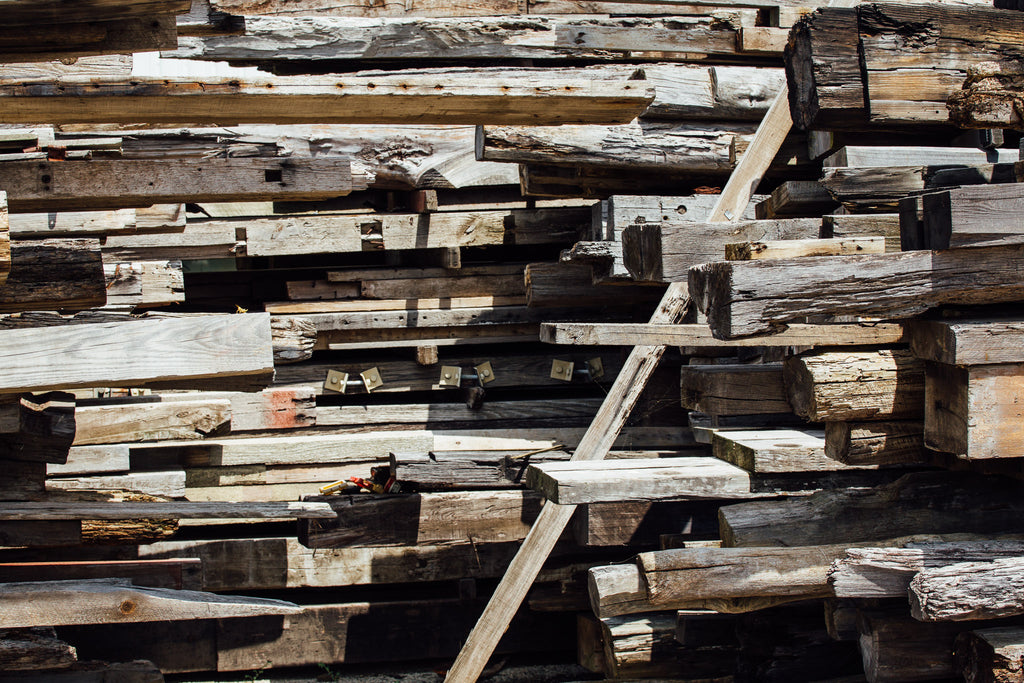





Brad and his crew salvage buildings all over the country, hauling the goods back home to Texas, where they sit in organized chaos until the right project comes along.


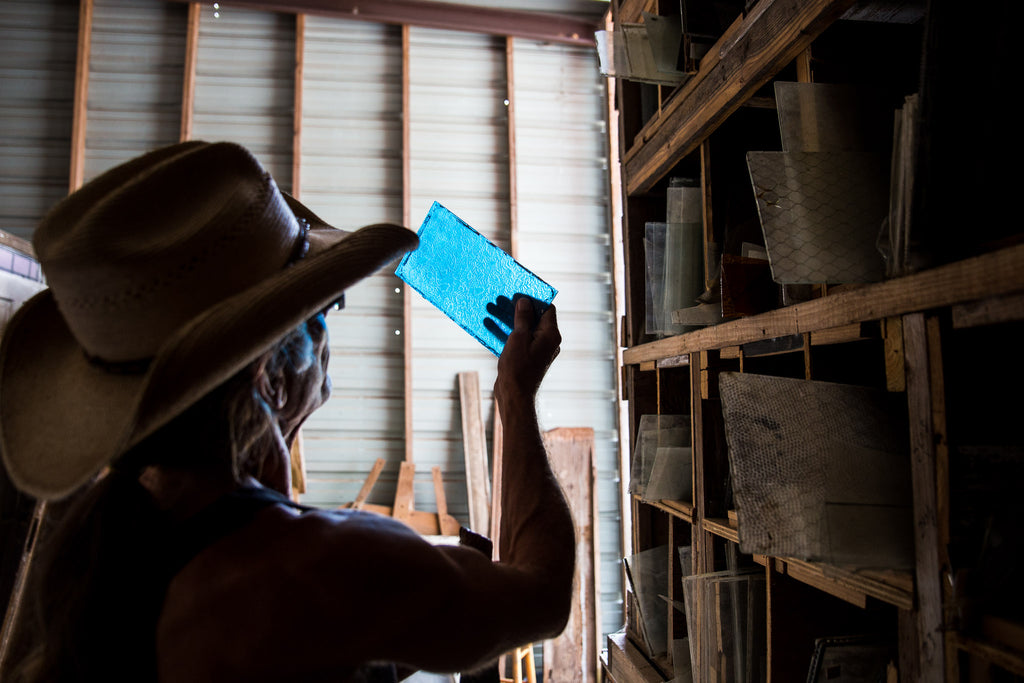
There are likely more doorknobs here than every doorknob you've ever seen in your lifetime, as well as hinges and other fixtures. Large barn door hinges are used on the houses' porch roofs to allow them to fold flat against the siding for transportation.
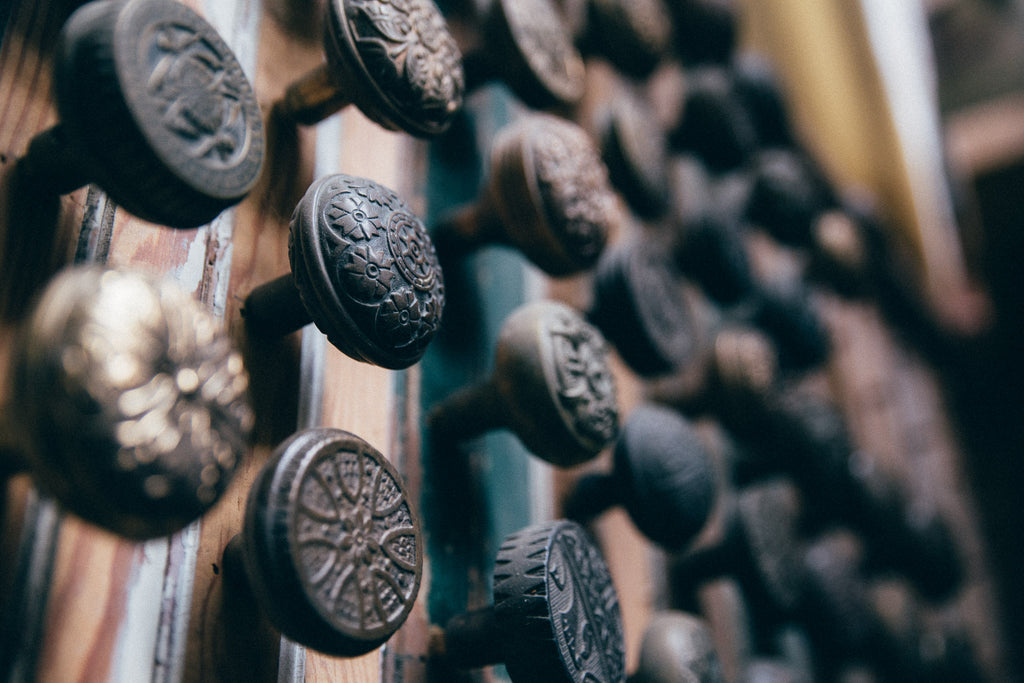
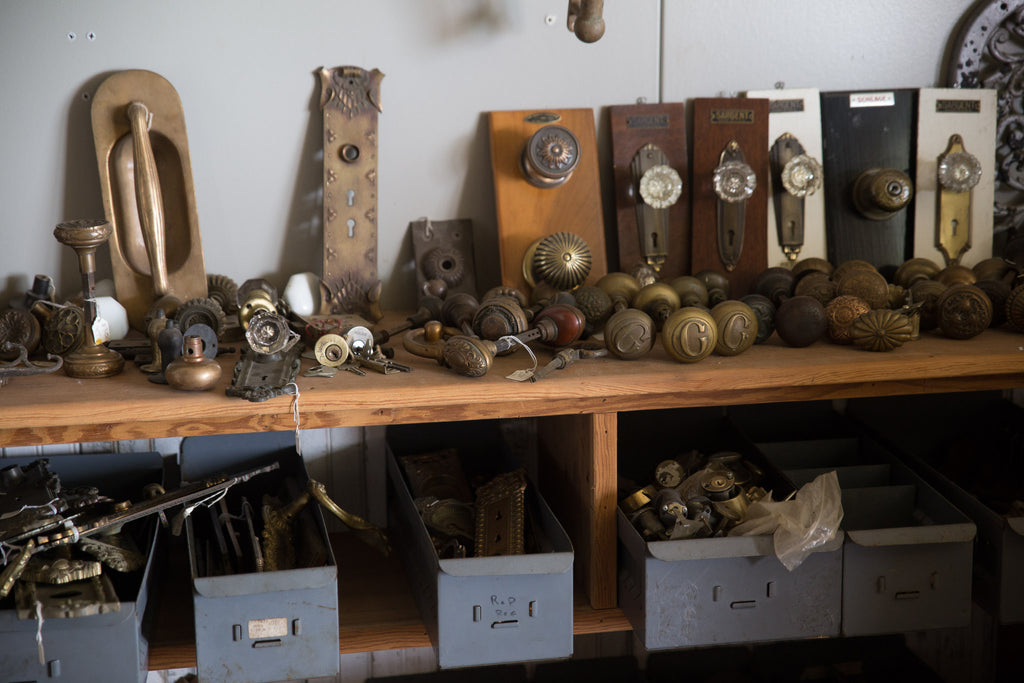
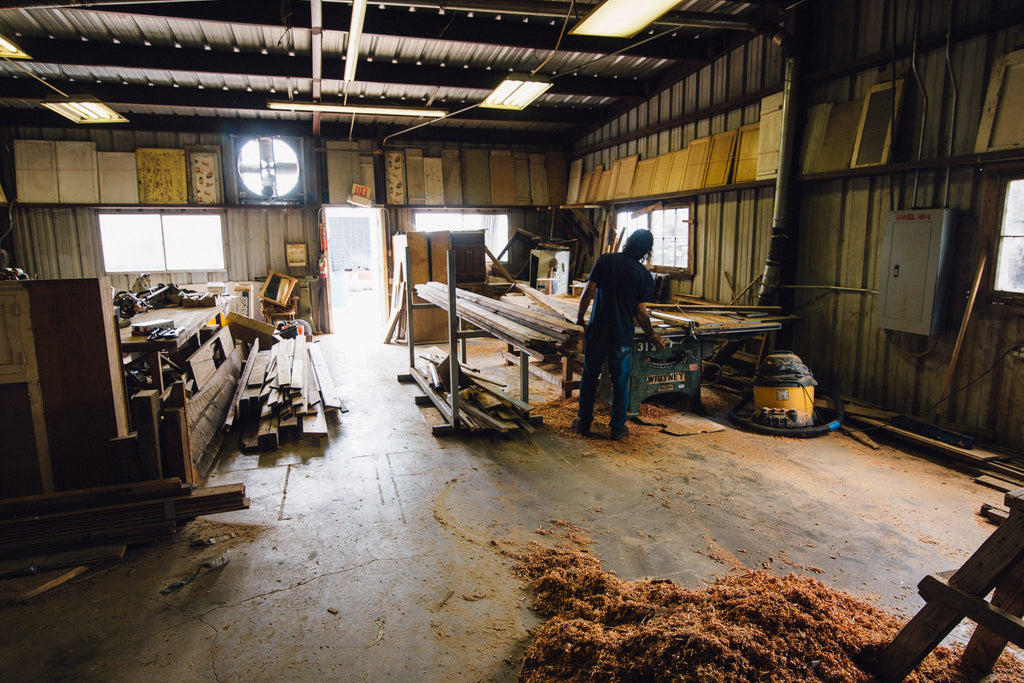

At the time of our visit, there were three tiny houses under construction, all at varying stages. One was still being framed. The second has it's exterior walls and insulation installed, while the third is nearly finished, with just the final touches being worked out.


The stairs are one of the most interesting aspects of these houses. A traditional staircase takes up an exceptionally large amount of space, so efficient stairs and ladders must be built instead. Brad often designs stairs that require you to step with alternating feet, and have their fronts carved out so that tall people won't clip their knees walking up.


Not everything used in construction is salvaged. A very small percentage includes, by necessity, modern components like spray foam in the walls, which insulates and air seals, and space-age wrappers that go around the exterior, LED lighting, and electrical wires.
Some of Brad's houses aren't wired for electricity at all. On others, main circuit breakers are built right into the interior walls to allow the power to be cut to the whole house easily, giving the homeowner the option of remaining clear of all electrical fields.



Another benefit of old-growth, tight-grained wood is termite resistance. Termites need to eat between the hard rings of any wood growth, and if the space is too small to allow their bodies in, the wood remains untouched.



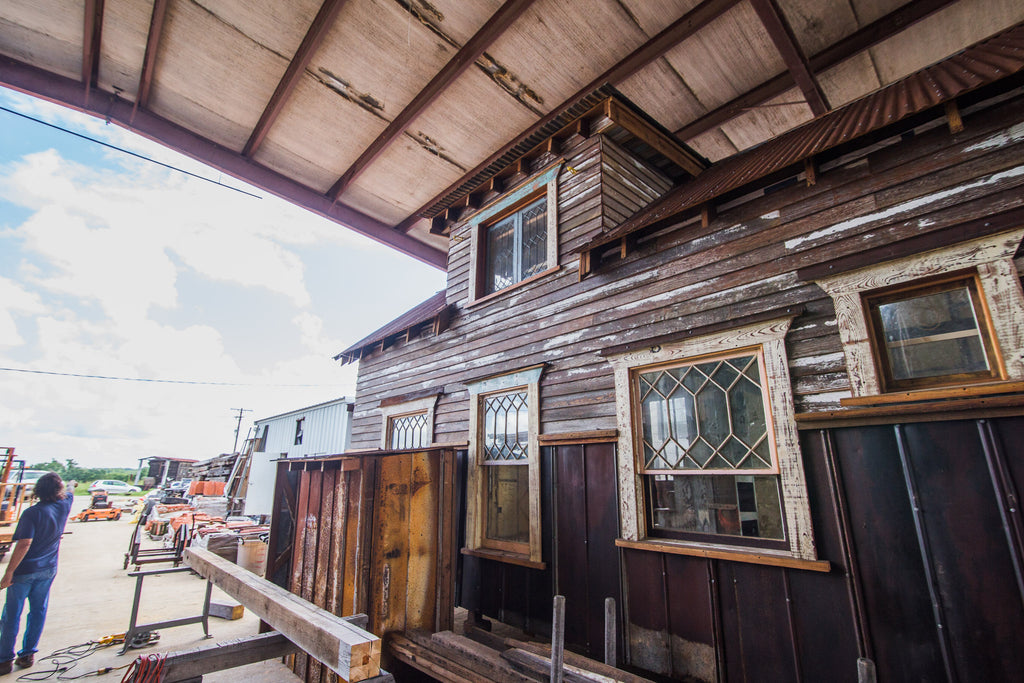



One feature nearly every Tiny Texas House shares are beautiful windows. American-made stained glass adorns many—and sometimes all—of the windows.


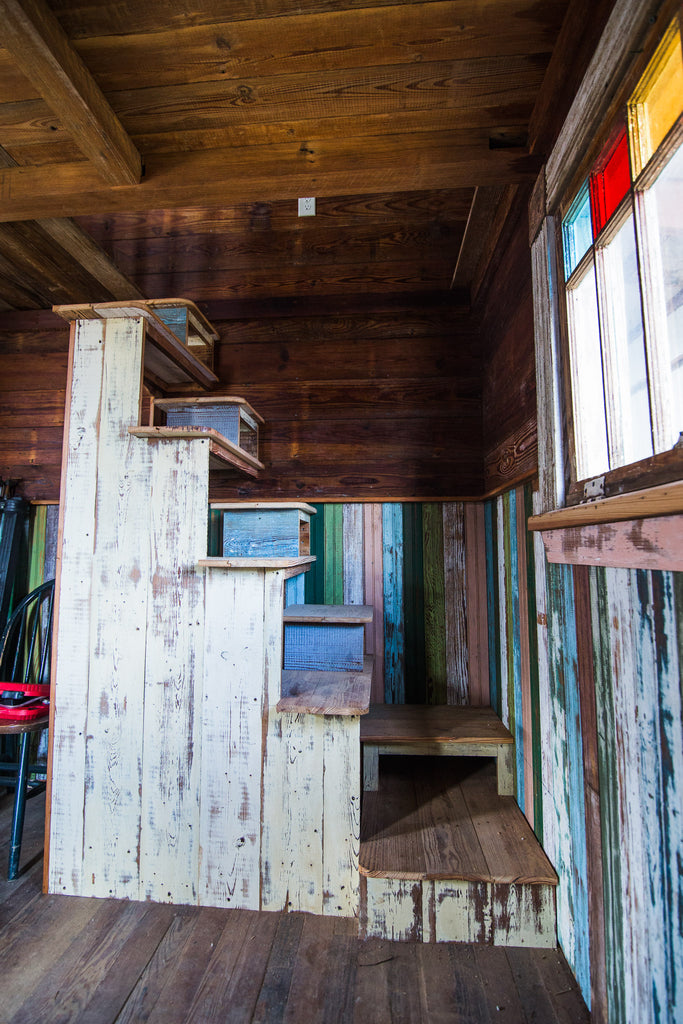




If you visit Brad in Luling, he'll lead you on a tour of a small village of tiny houses on the property, which has been dubbed the town of Salvage, Texas.

And along the tour, Brad will explain to you the concept of "Space Magic."
Space Magic is what Brad refers to when he talks about how to maximize the space inside of the houses. While not necessarily increasing the taxable square footage of a house, by clever design and engineering, spaces can be made to feel larger than they really are. This is Space Magic.
Some of his earlier designs, like the one pictured below, follow a formula that he used several times: a front door leading to a rectangular open room with a small kitchen and bathroom in the back, a loft and bed above that, with a ladder to access it. Small, functional, beautiful, simple.

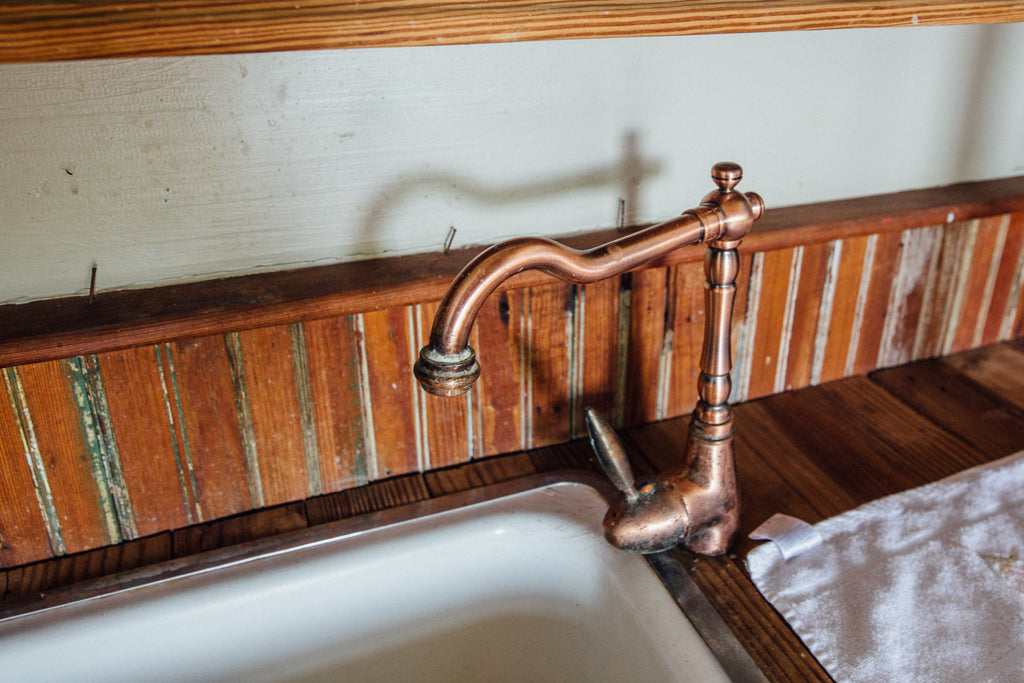

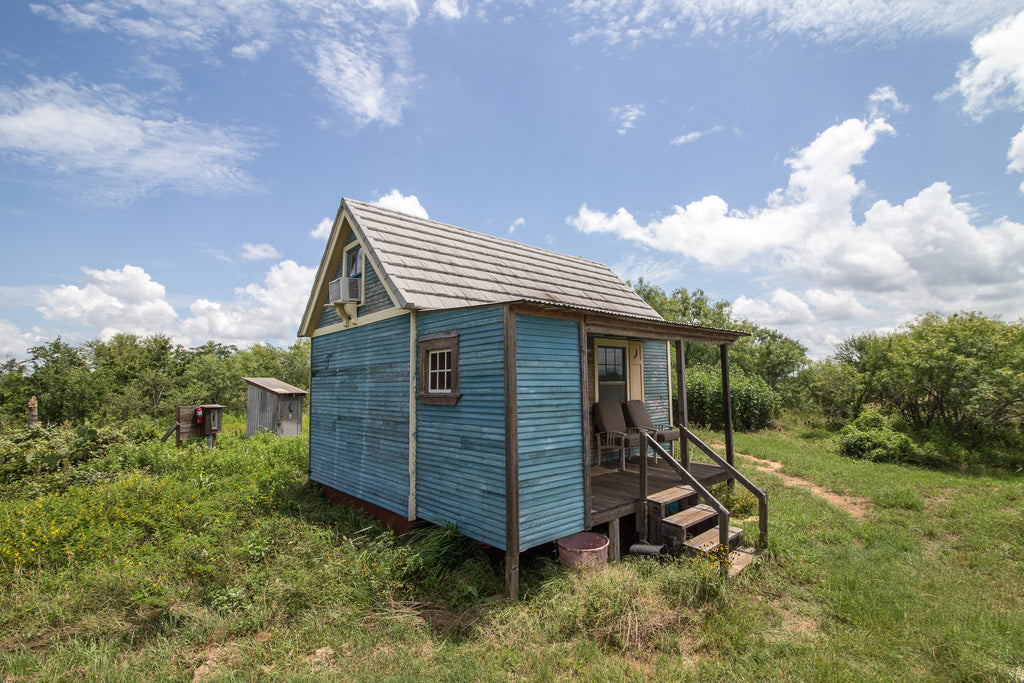



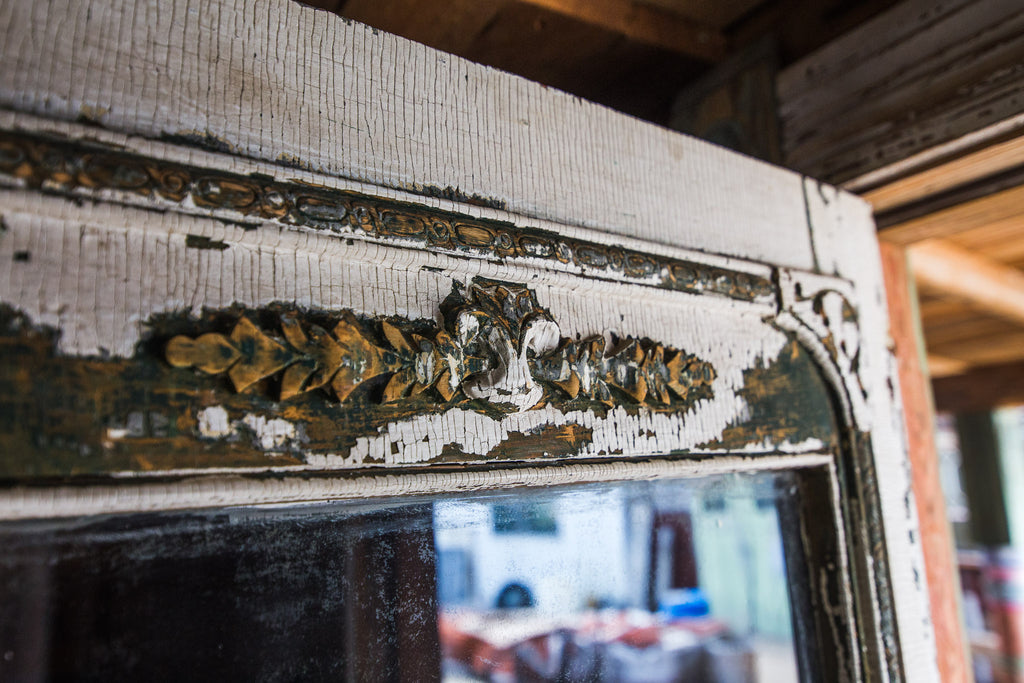










According to Brad, the house pictured below is the best example of Space Magic. With a large second floor with a large opening connecting the top and bottom, the feeling of openness is unmatched.



While the windows are certainly decorative, they're functional, as well. Opening all the windows creates a cross breeze which pulls out all the air immediately and replaces it with fresh air. But Brad also explained that the reason the houses stay as cool as they do, without air conditioning of any kind, is thanks to the Venturi effect, which you probably don't remember from high school, but you probably did learn about. The basic idea is that when air passes through a tight space, it speeds up and cools. Having small windows, on all sides of the house, and a cross breeze to force air to pass through, creates cooler air inside the house.

Technically speaking—legally speaking—this house named "Heaven" is 240 square feet. This does not include, however, space that is legally deemed "storage" or "attic space." And that's intentional. Brad cleverly designs spaces that are simultaneously livable without increasing your tax footprint.




You can't throw a stone without hitting an example of smart design. Pictured below are cabinet doors that give you access to the space below the sink, but the whole panel folds up on hinges and becomes a table. The support bar that holds up the table also blocks the doors from falling open.

Stairways don't have to be wasted space, as this one shows. Each of the larger steps has built-in drawers.


Along our tour, Brad showed me more than just the houses. He proudly spoke at length about the village he's built, and the ones he intends to build in the future. Each village would be unified under a common theme, be it a group of musicians, or healers, or gardeners. His land is his project; it's more than just the tiny houses he's building on it. When he bought the plot, there was no standing water on it. Now, he has dug a pond and canal system that retains water from a nearby creek, and it feeds his land. While digging the ponds, he would throw handfuls of various seeds out into the fresh dirt just to see what would take naturally. As we walked we saw sunflowers, corn, squash, peas, and radishes.

Tiny above-ground houses are all well and good, but Brad also likes to try new things, and that meant going underground.


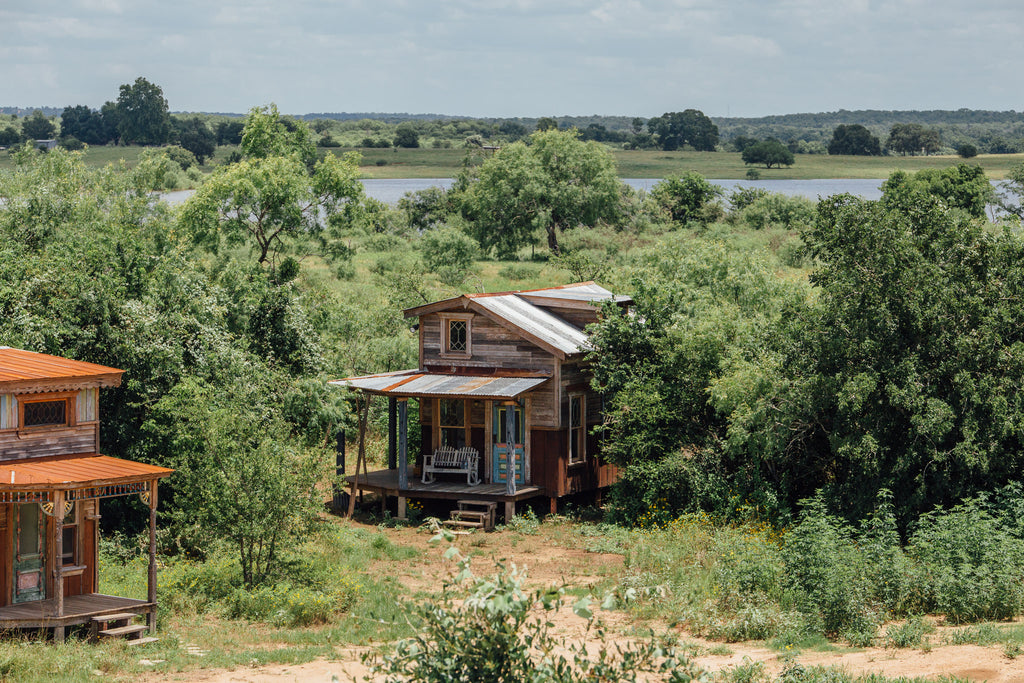

If you'd like to visit Tiny Texas Houses for a tour of your own, you'll be welcome there, we assure you. Visit their website for tour times and other details: www.tinytexashouses.com.
- CK

Comments
George:
Absolutely amazing! Beautiful to look at! And so very Texan.
Mar 19, 2018
Sylvia:
Stunning!
Oct 23, 2017
Christine Laney:
Next time I come to S.A., I am driving out to see. It is now Aug. 2017.
Aug 01, 2017
Maryjo:
Wow!! Im very happy saw your creation’s,,,Im looking for a tiny house,,,this is a my dream,,,,Blessing to you,,,,
Mar 12, 2017
Majorie Wheatley:
So much thought went into detail with overall design ..stained glass on windows,pretty railings, different wood shades.Very rustic country charm…. Cheers!
Feb 28, 2017
Andrea s.:
You have an beautiful gift you seem very spirituality ground and artist each one of your homes are like art work ….love it….
Sep 30, 2016
judy:
Do u build tiny houses that are mobile?
Sep 05, 2016
Kelly Lewis:
My husband and I don’t have a home. we would love to have a small home on wheels. Im disabled and not able to work. My husband does work, but we don’t have a car. We have been looking everywhere for something small that can be moved with ease. We don’t own any property. We just need a home on wheels, just for the two of us.
Sep 03, 2016
Sally Sweet:
I am interested in a tiny! I am 75 and my husband pasted away last year. I want so much to sell my home and have a tiny house of your kind.
Aug 30, 2016
Juanita:
I love these tiny homes. They are so cute and really different.
Nov 16, 2015
Leave a comment